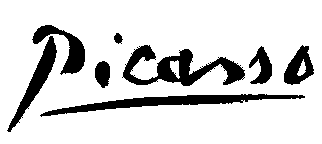

Blue Period
(1901-1904)
- Depicts forlorn people painted in shades of blue, evoking feelings of sadness and alienation. Expressing human misery, the paintings feature moving depictions of blind beggars, alcoholics, prostitutes and artists.
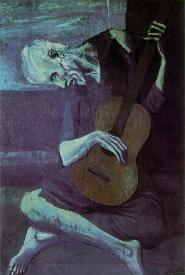
Old Guitar Player. 1903
![]()
Rose Period
(1904-1905)
- Influenced by Fernande Oliver. Changed his works from the dark and gloomy blues to light and happy reds and pinks, giving his works a warmer, more optimistic mood. During the time, he also painted many pictures of a circus that he often visited in Paris.
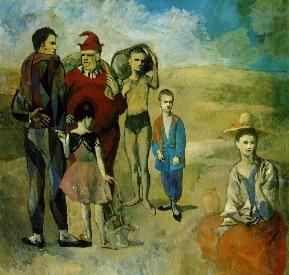
The Acrobats. 1905
![]()
Protocubism
(1906-1909)
- Picasso moved to Gosol, Spain in 1906 where his style changed again. This period was influenced by Greek, Iberian, and African art. Picasso started using more geometrical figures in his work. The key work of this period is his Les demoiselles d'Avignon which was considered so radical in style –its picture surface resembling fractured glass – that it was not even understood by contemporary avant-garde painters and critics. Picasso destroyed spatial depth and restructured the ideal form of the female nude body into harsh, angular planes.
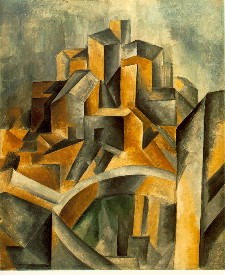
Reservoir at Horta. 1909
![]()
Cubist Sculpture
(1909 - )
- Again, a technique Picasso used throughout his career. His first cubist sculpture is the bronze bust of Fernande Oliver called Head of a Woman. He also made constructions from odds and ends of wood, metal, paper, and non-artistic materials.

Head of a Woman. 1909
![]()
Analytic Cubism
(1909 - 1911)
- Inspired by the French postimpressionist artist Paul Cézanne, Picasso and French artist George Braque began painting landscapes in a new style which was dubbed “cubism” by a critic who described the works as being made of “little cubes.” They created this style by breaking down and analyzing an object. The main color scheme was browns and other muddy colors (monochromatic). Picasso’s favorite subjects were musical instruments, still-life objects, and his friends.
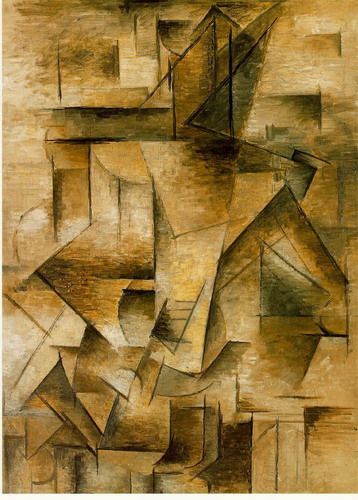
The Guitar Player. 1910
![]()
Synthetic Cubism
(1912 - )
- Picasso began to paste paper and pieces of oilcloth to his paintings and then paint either on them or around them. This was the beginning of his collage work. This phase of cubism is more decorative and colorful in style, although the shapes remain fragmented and flat. Picasso used this technique throughout his career but never exclusively.
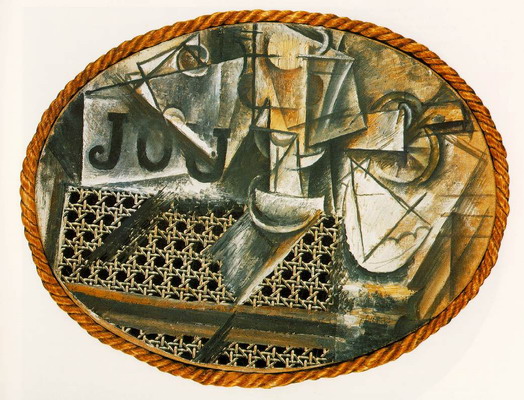
Still Life with Chair Caning. 1912
![]()
Realism and Surrealism
(1914 - )
- Picasso claims that he was not a surrealist but many of his pictures have a surrealist feel to them. During World War I, Picasso went to Rome and worked as a designer with the Ballet Russes. There he met Olga Koklova, whom he later married. He painted many realistic pictures of her and later, in the 1920’s, he painted neoclassical pictures of women and pictures inspired by Greek mythology. At the same time, Picasso also created strange pictures of small-headed bathers and violent convulsive portraits of women that are often thought to have indicated the tension he was experiencing in his marriage.
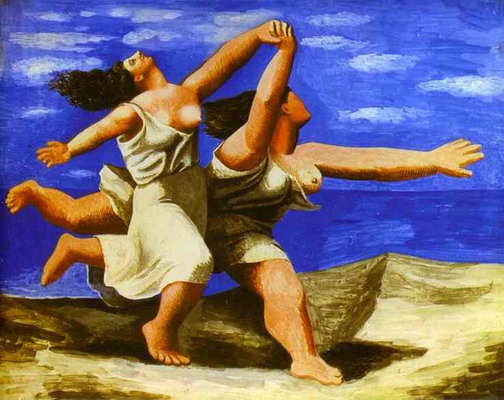
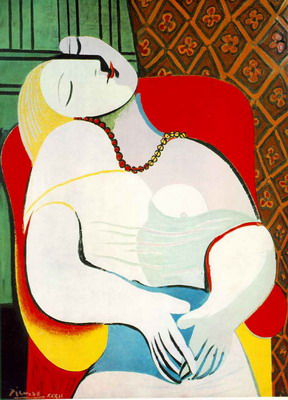
Left: Women Running on the Beach. 1922; Right: The Dream. 1932
![]()
Guernica
(1937)
- This was a work that was done to express his outrage of the German bombing of the Basque town of Guernica on April 26, 1937 during the Spanish Civil War. The painting is not a portrayal of the actual bombing but rather a symbol of the act itself – the inhumanity, brutality and hopelessness of war.

Guernica. 1937
![]()
World War II and Post-World War II
(1939 - 1968)
- With the onset of World War II, Picasso moved towards more somber, death-like pictures in his works. Following World War II, Picasso's work became less political and more gentle. He spent the remaining years of his life in an exploration various historical styles of art, making several reproductions of the work of earlier artists. During the late 1940’s, his relationship with painter Françoise Gilot brings about two children, Claude and Paloma, who appear in many works that repeat his earlier styles.
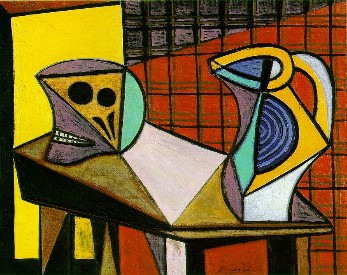
Skull and Pitcher. 1945
![]()
Later Works
(1968 - 1971)
- Devoting his full energies to his work, Picasso became more daring, his works more colorful and expressive, and from 1968 through 1971 he produced a torrent of paintings and hundreds of copperplate engravings. At the time these works were dismissed by most as pornographic fantasies of an impotent old man, or the slapdash works of an artist who was past his prime. Only a decade later, after Picasso's death, when the rest of the art world had moved on from abstract expressionism, did the critical community come to see that Picasso had already discovered neo-espressionism, and was, as usual, ahead of his time.
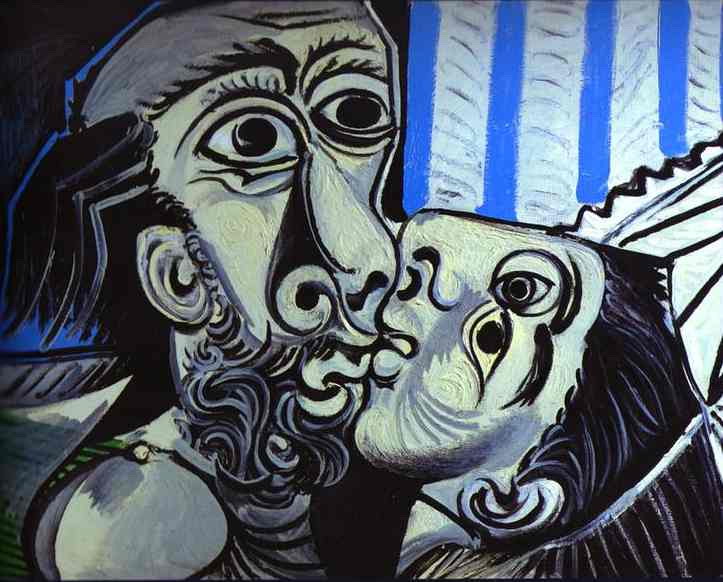
The Kiss. 1969